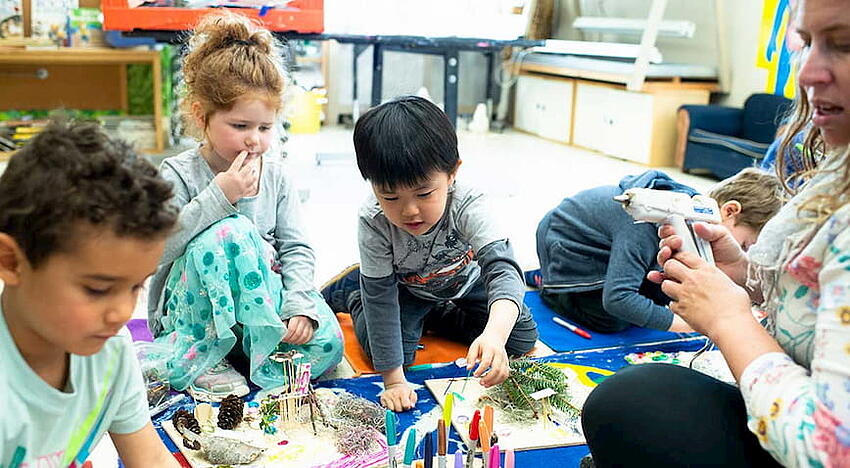Being a parent entails many difficult decisions daily. Some of the biggest ones deal with education. From the time a child is an infant, parents must be concerned about their brain development and learning. A lot of factors should be taken into consideration when it comes to the education of a child.
Before children enter Kindergarten, parents can choose between many philosophies when it comes to approaches to education. Two of them are academic preschools and learning through play programs.
Most of the time, the decisions come from previous experiences and how parents were raised within specific structures. However, parents tend to be open to other structures beyond their frameworks since there are new ways of education developing continuously with different approaches that could be justified by science or experience. Therefore it could be worth considering or even just taking a look at it.
What are Play-Based Programs?
Play-based programs are precisely as they sound. Instead of containing children in structured activities led by a teacher, children opt into activities or games that appeal to them. Perhaps the most famous play-based program is Montessori. Montessori includes hands-on learning, collaborative play and self-directed activities to guide children, but the execution is mostly dependent on the children themselves.
“Classrooms” are set up in stations in this type of program. Children get to choose where they want to play. Some stations may include imaginative play (dress-up), blocks and building toys, art supplies, trains and other vehicles, or other engaging and educational activities.
In this sort of program, teachers play a background role. They may gently guide children or teach them how to use a toy properly, but the children themselves direct the activity.
A great example of play-based learning is a puzzle. Caregivers put out a basic puzzle with only a few pieces, show them how to place one piece into another if it fits, and from there you would allow the child to continue on their own and complete the puzzle of 4 pieces. If they struggle a lot you would help with another piece of the puzzle and then grant them the opportunity to try again and figure it out.
How Do They Compare to Academic Preschools?
In an academic or traditional preschool, classrooms are more similar to a Kindergarten. Children learn together through structured activities that their teacher or teachers lead. Some of these activities might include some of the same as above. The main differences include that play-based activities are directed by the learners and structured preschool activities are directed by the teachers mainly.
Other everyday academic preschool activities include learning to count, recognize letters and numbers, and even some basic writing, such as writing names. They have structured, often scaffolded art projects, which is sometimes a favorite keepsake of parents. Storytime is also a standard feature of academic preschools when teachers read to students.
Comparing and Choosing Between the Two
There are some significant differences between schools that incorporate mainly play-based learning and traditional preschools. However, the outcomes are often strikingly similar. Children’s brains are highly adaptable, and they will pick up skills and competencies no matter how they’re presented. Especially repetitive activities can easily become a habit, no matter how the activity was presented to the child.
As far as trade-offs, children learn school-like discipline better in traditional settings. Sitting still for prolonged periods, raising their hand, asking permission for privileges, and so on aren’t taught as much in play-based programs. Preschool can also advance children’s ability to follow instructions in a structured setup, establish social-emotional skills and could be less expensive than other educational options for children.
On the other hand, play-based programs can be more age-appropriate since children need to learn how to order their worlds and make choices. Children coming from play-based programs may also develop stronger social skills, problem-solving, and decision-making. They could develop strong cognitive skills in the process as the approach focuses mostly on learning through authentic contexts.
Which One is Best?
In the end, the program that is best for a child depends on them more than any other factor. Many families find success with play-based programs, but caregivers should weigh the options before committing. It’s important to think about the kind of environment the child would thrive in, and visit any potential schools. The perfect fit varies a lot and is very dependent on the individual child. Parents should consider both for starters and take all factors into consideration, but can also speak with a pediatrician if they have more questions.
